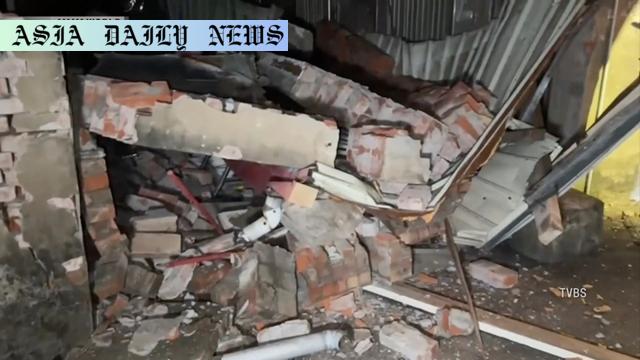A powerful earthquake in southern Taiwan has caused injuries, structural damage, and widespread tremors across the region.

Powerful Earthquake Rocks Southern Taiwan
In the early hours of Tuesday, a magnitude 6.4 earthquake struck southern Taiwan, centered near Chiayi County. According to Taiwan’s Central Weather Administration, the quake originated at a depth of approximately 9.7 kilometers, making it shallow enough to cause significant surface-level impact. The region shook violently, with its reverberations felt across key cities such as Tainan, Kaohsiung, and even as far as Taipei.
Extent of Damage and Rescue Operations
The earthquake caused structural damages and debris to scatter across impacted zones. Fire officials reported rescuing 11 individuals trapped under rubble in Tainan, one of the areas hardest hit. The intensity of the quake on Taiwan’s seven-tier seismic scale reached lower 6 in Chiayi County and lower 5 in neighboring southern cities like Tainan and Kaohsiung. Emergency responders have been actively working to clear debris and ensure the safety of local residents.
Tally of Injuries and Hospitalizations
Initial reports confirmed injuries to 27 people across the affected regions, including Tainan, Kaohsiung, and Yunlin County. These individuals have since received medical treatment in local hospitals. Authorities are closely monitoring the situation for any additional casualties or damages that may emerge as rescue and recovery efforts continue.
Geological Context and Intensity Measurements
Geologically, Taiwan is prone to seismic activity due to its location near the boundary of the Philippine Sea Plate and the Eurasian Plate. This latest quake highlights the unpredictable challenges that come with living in such a seismic hotspot. The earthquake’s intensity was felt at lower scales of 2 in Taipei, illustrating the widespread reach of the tremors across the island.
Response and Public Sentiment
Footage broadcast on local Taiwanese TV station TVBS showcased collapsed structures, displaced belongings, and fractured buildings in affected areas. Many residents have expressed concern over the recurring threat of earthquakes in Taiwan, urging authorities to improve emergency preparedness and reinforce infrastructure resilience in vulnerable zones. While the nation’s emergency response has been swift, the event serves as a sobering reminder of the importance of disaster mitigation in highly seismic regions.
Conclusion
As Taiwan grapples with the aftermath of the 6.4-magnitude earthquake, attention remains focused on rescue operations and rebuilding efforts. The resilience of the people and the preparedness of the authorities play a crucial role in minimizing the long-term impact of such natural disasters. Moving forward, there will be discussions on enhancing seismic safety measures and ensuring a swift recovery for affected communities.
Commentary
The Unpredictable Power of Natural Disasters
Earthquakes, like the recent magnitude 6.4 tremor in southern Taiwan, are a stark reminder of nature’s immense and unpredictable power. Despite advancements in seismic monitoring, predicting when and where such devastating events will strike remains a challenge, leaving communities vulnerable to their sudden impact.
Lessons for the Future
This event underscores the significance of stringent building codes and well-prepared emergency response systems in saving lives. Taiwan’s relatively swift rescue efforts, as seen in Tainan, are indicative of the experience the nation has gained from past quakes. However, there is always room for improvement, particularly in terms of disaster education and preparedness at the local community level.
Global Perspective on Seismic Activity
Globally, areas prone to seismic activity can draw lessons from this incident. Resilience involves not merely responding to disasters but planning ahead through robust infrastructure, clear evacuation protocols, and comprehensive public awareness initiatives. Taiwan’s ability to recover swiftly will likely inspire other earthquake-prone regions to reassess their own preparedness strategies.
Empathy and Support for Affected Communities
At the heart of every natural disaster are the people whose lives are upended by it. The injuries and damages reported in southern Taiwan remind us to express empathy and solidarity with affected communities. Our global community has the responsibility to extend a helping hand through support, resources, and expertise, demonstrating that the human spirit can prevail even in the face of nature’s fiercest challenges.


